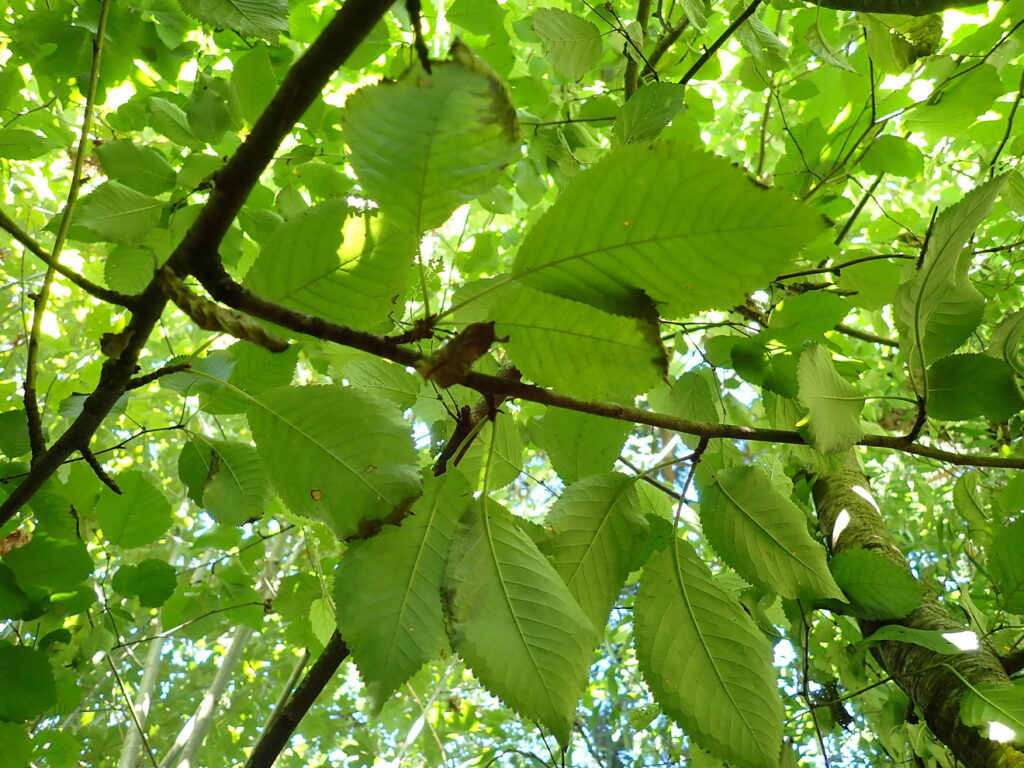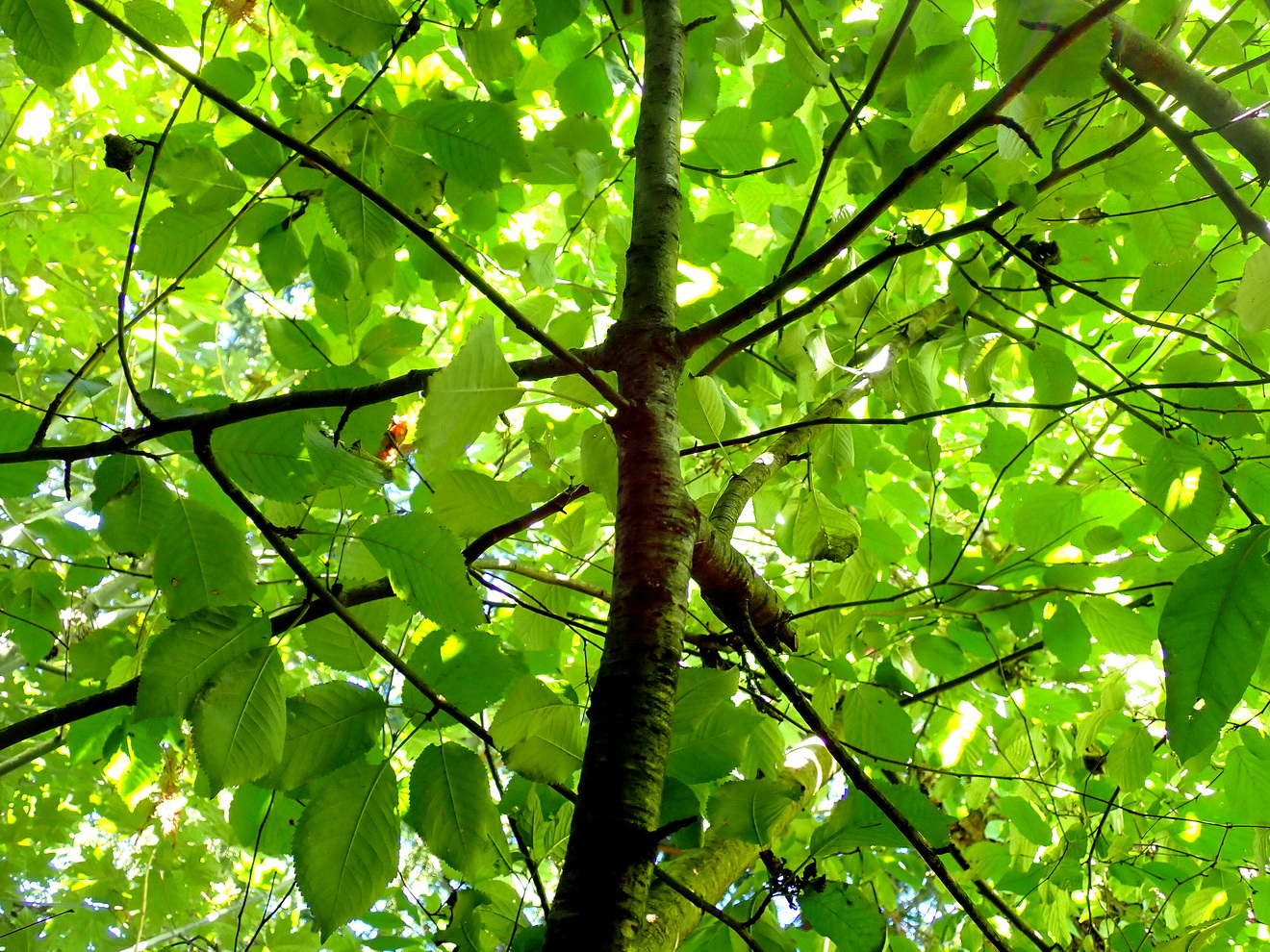Last summer, I noticed a cherry tree growing in the backyard forest. Since it had come up wild, I thought it might be the Pacific Northwest native Bitter cherry, Prunus emarginata. But after some help from Arthur Lee Jacobson on two of his excellent plant tours, I concluded it was the naturalized non-native Mazzard cherry, and I had to decide whether or not to cut it down.
Mazzard Cherry (Prunus avium)
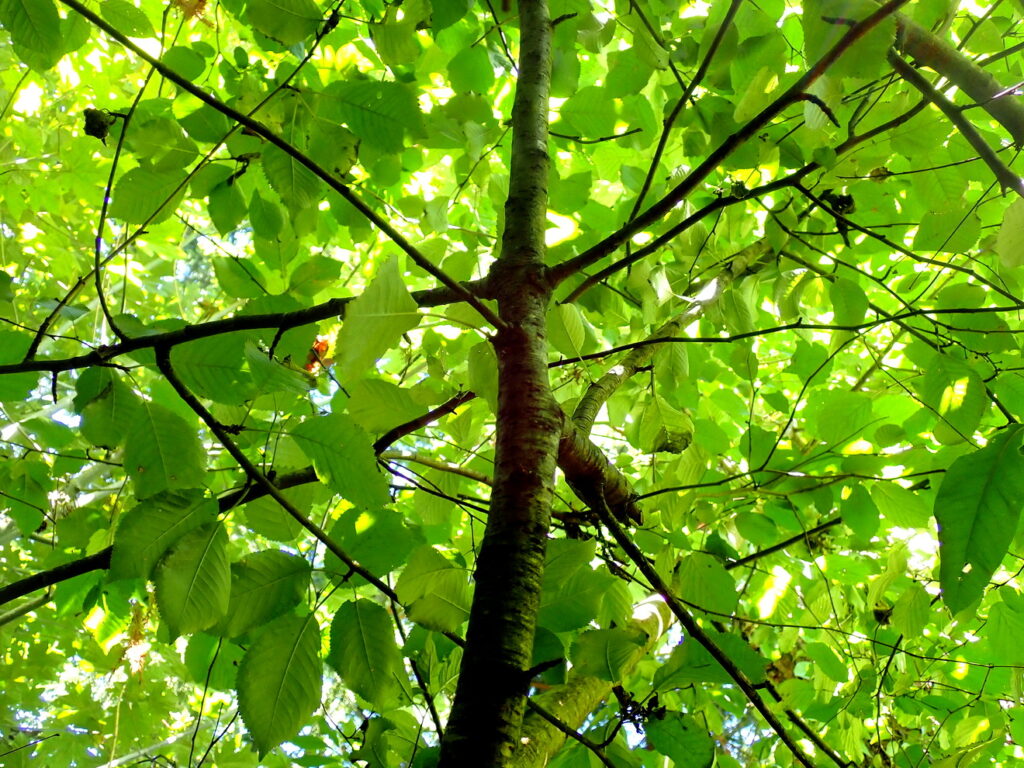
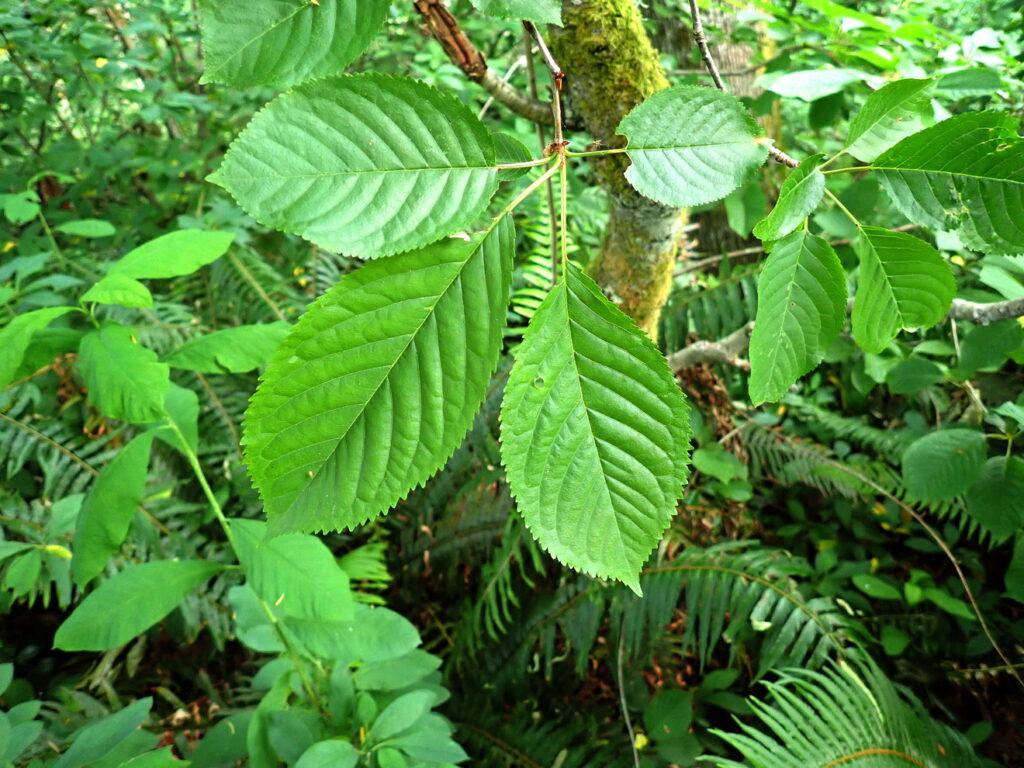
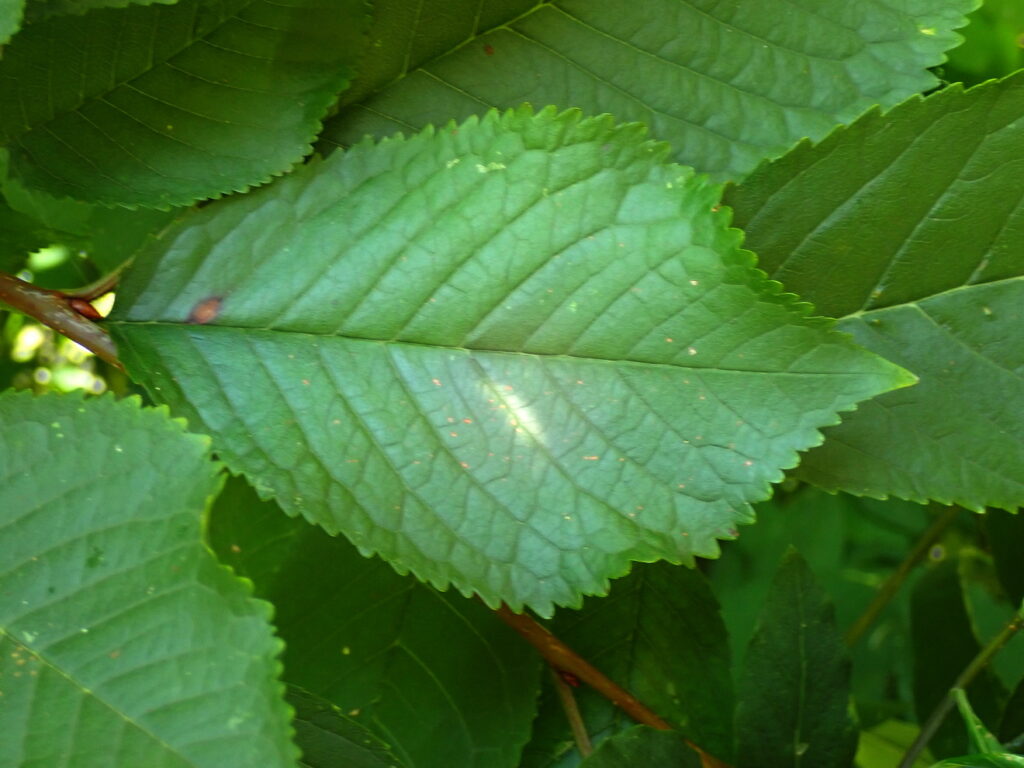
Bitter Cherry (Prunus emarginata)
On the plant tours, Mr. Jacobson showed our group some Bitter cherry trees. Their leaves lacked the serrated edges and pointy tips of the Mazzards, and they were soft and lightly fuzzy to the touch.

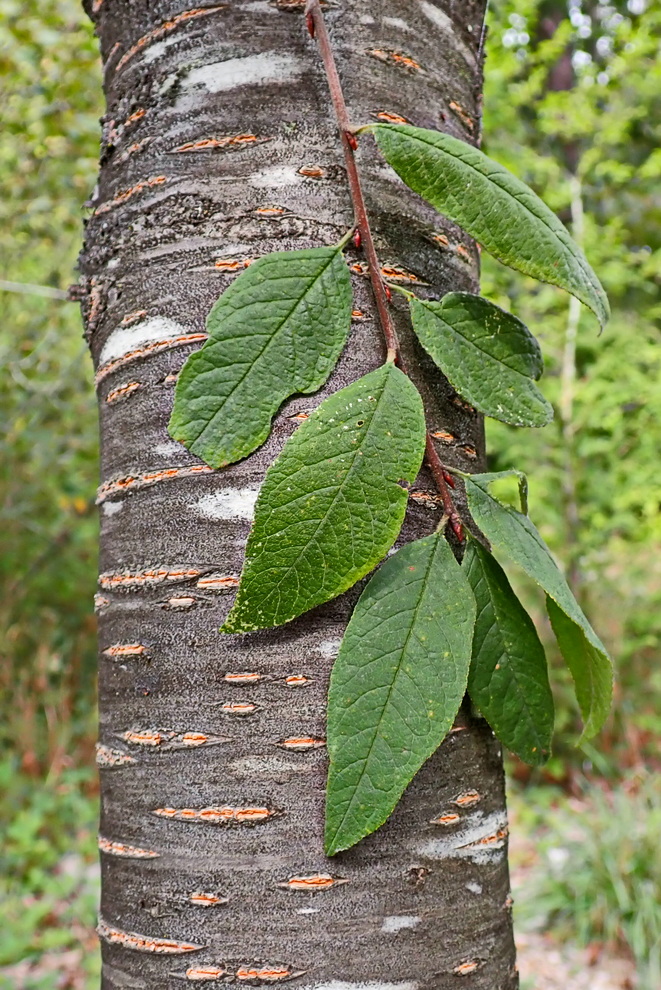
Using iNaturalist, I found what had been identified as a Bitter cherry on Olympic Drive in Everett, but now I wonder if that identification was correct.
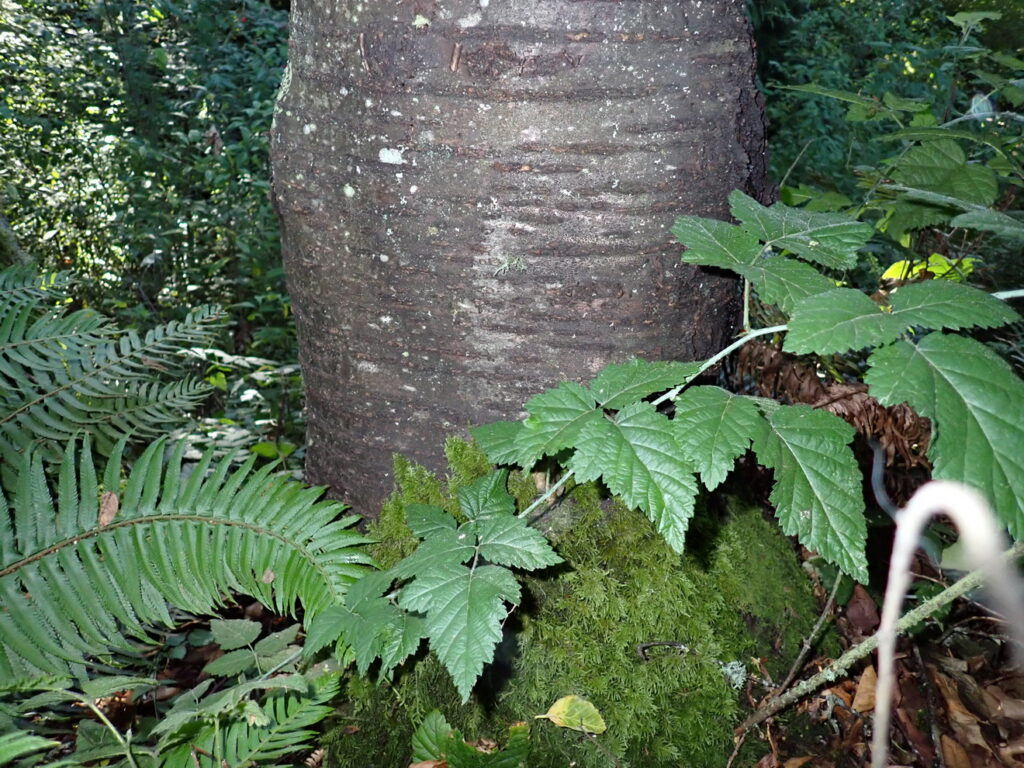

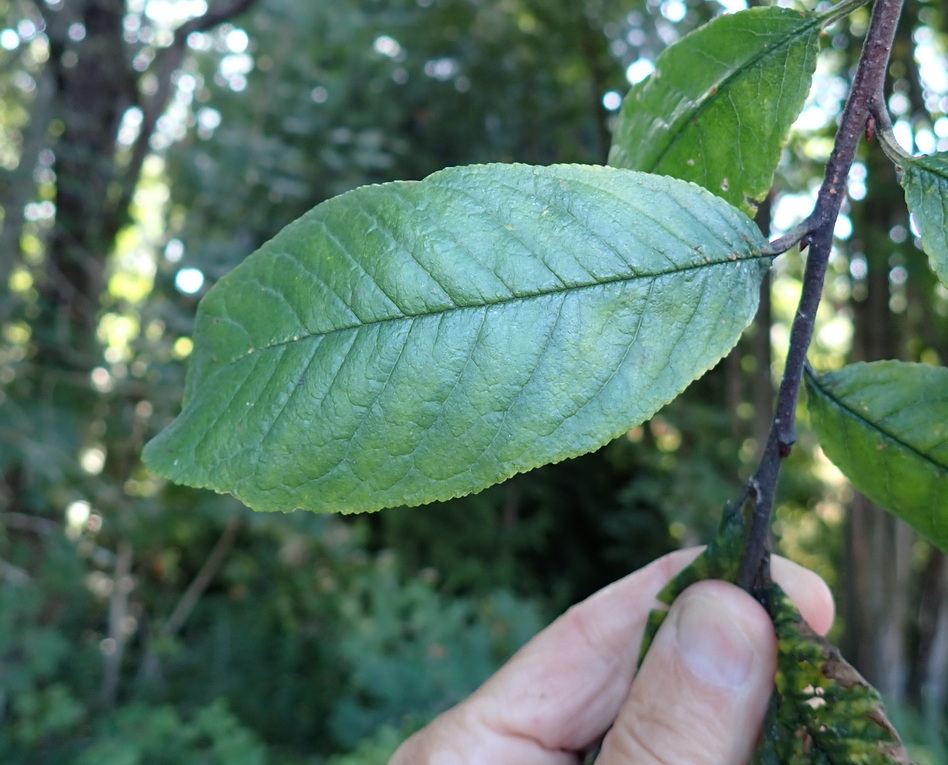
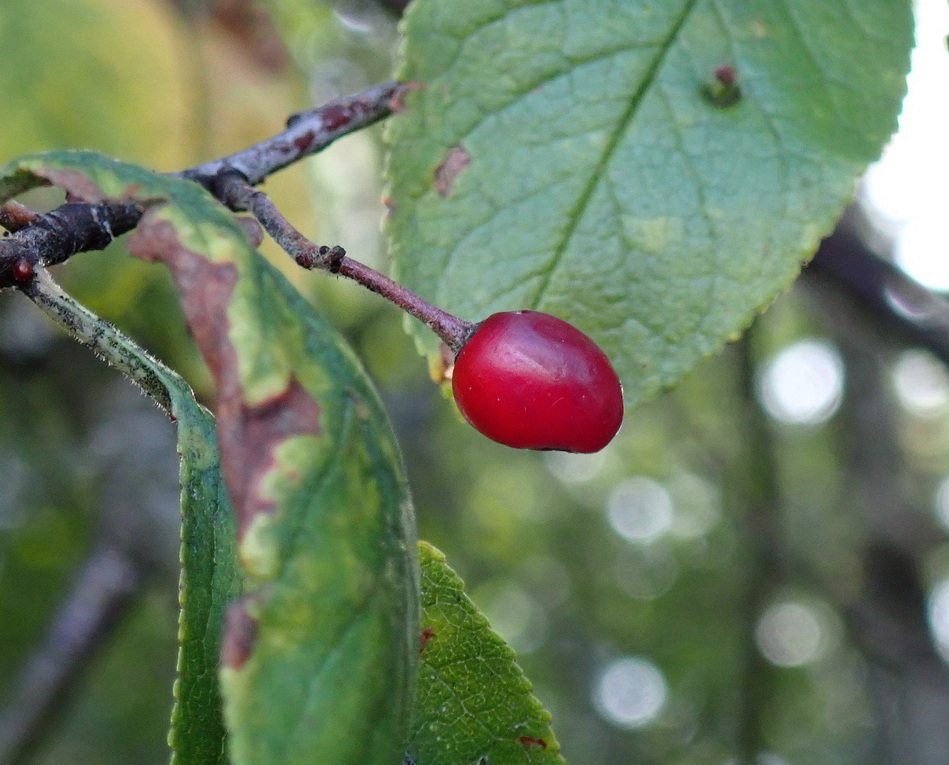
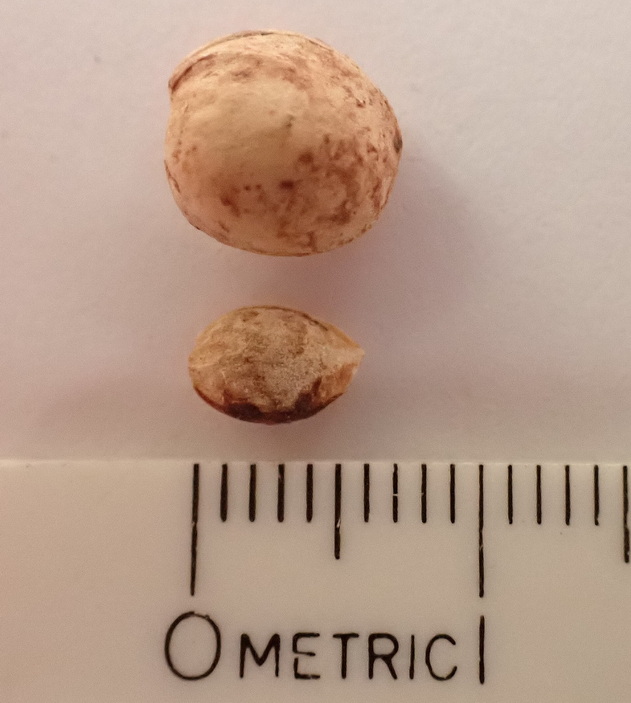
I’m pretty sure that the cherry tree on Olympic Drive is not a Mazzard, but the few leaves I could reach were not softly hairy. Hard and smooth would better describe them. Could this tree be a hybrid Prunus pugetensis?
Prunus pugetensis — a Unique Northwest Cherry Hybrid
In 2007, Arthur Lee Jacobson and Peter Zika published a paper (here), documenting their discovery of a hybrid of Bitter and Mazzard cherry they named Prunus pugetensis. After studying many of these hybrids in our region over five field seasons, they determined that their physical characteristics are typically intermediate between those of the parents.
I was able to find several Prunus pugetensis trees in Seattle based on directions from Mr. Jacobson.
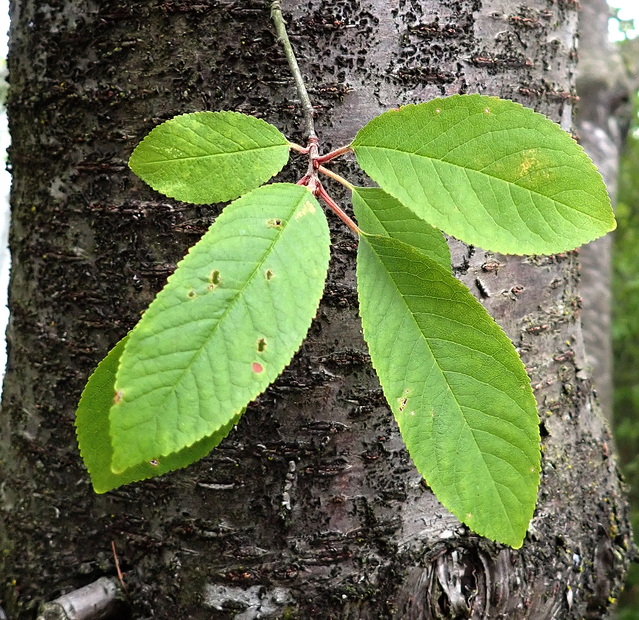
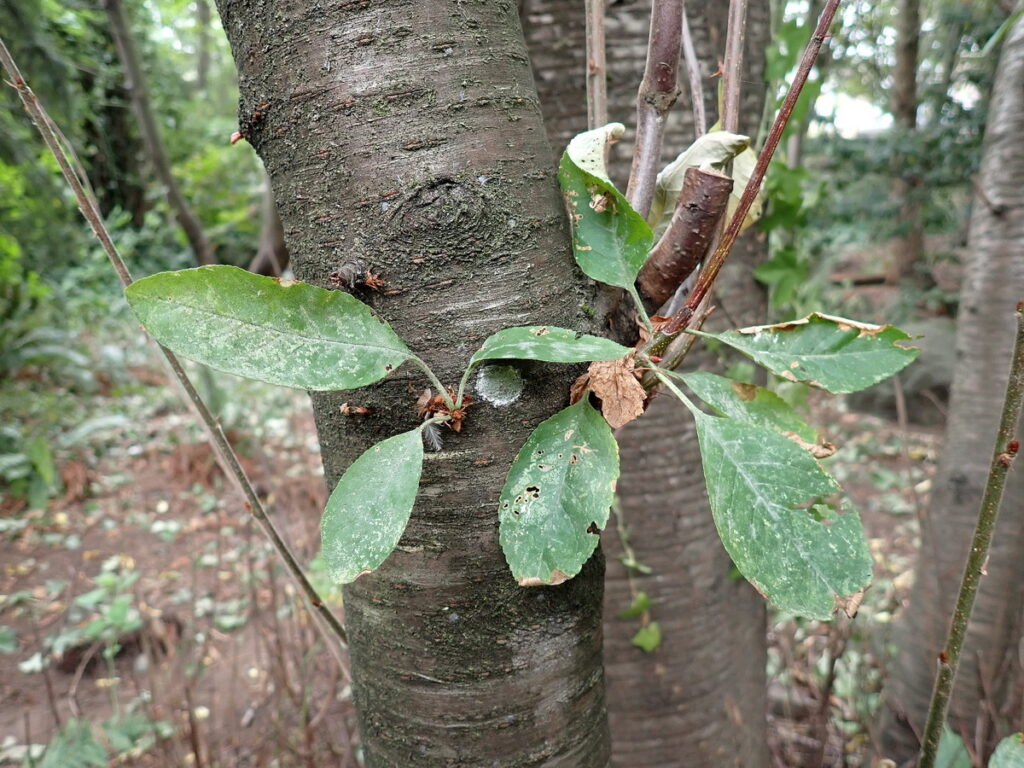
Jacobson and Zika have documented that “unlike the parents, most of the flowers of pugetensis eventually abort, and the hybrid rarely produces fruit.” That is ironic, because the hybrid apparently produces significantly more flowers than the Bitter cherry. I am looking forward to visiting the cherry tree on Olympic Drive next spring to see if the flowers are showy or scarce, and early next summer to see if there is any fruit.
Why I Cut Down the Backyard Forest Mazzard
I don’t think the Mazzard is as problematic as the seven invasive trees I wrote about recently, but the fact that it grows more vigorously, lives longer, and produces more fruit than the Bitter cherry, suggests that over time it will likely replace it in the Puget Lowlands. The backyard forest Mazzard was just small enough that I could still cut it down with a hand saw, and after thinking about it for a few weeks, I did, mainly because I didn’t want to support the gradual takeover of the Mazzard.
Nevertheless, I’m left wondering if I did the right thing. In the science of ecology there are so many questions and so few answers. Would the Puget Lowland urban forests benefit if the Mazzard replaced the less-robust Bitter cherry? Or, have certain key organisms coevolved with the Bitter cherry that cannot utilize the Mazzard? At what point does a native-only backyard forest become a stagnant museum piece rather than an integral part of a functional, evolving ecosystem?
